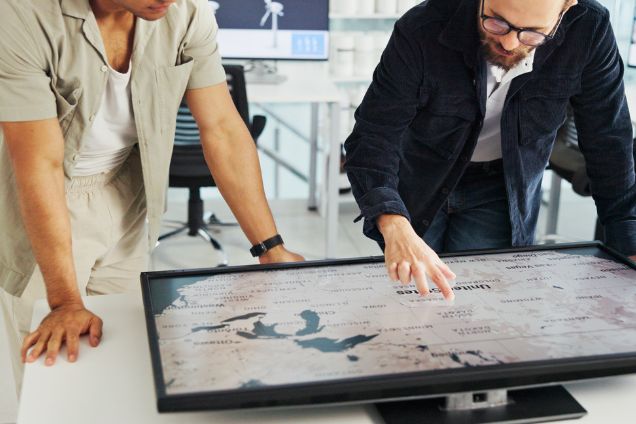Visual Tracking Training
Visual tracking is the ability of your eyes to smoothly and accurately follow a moving object. This skill allows you to read lines of text, catch a ball, drive safely, and move confidently through your environment.
When visual tracking is impaired, even simple tasks—like reading, walking in a crowd, or focusing on a moving object—can feel disorienting. Many people experience blurred vision, headaches, eye fatigue, or dizziness without realizing the cause may be related to how their eyes move and communicate with the brain.
At Health Plus Physical Therapy & Rehabilitation Center, we recognize that vision and balance are deeply connected. Through Visual Tracking Training, we help patients strengthen eye control, restore coordination, and improve overall functional performance.
Why Visual Tracking Matters
Your visual system is a key part of your body’s balance and movement control. When you move your head or body, your eyes must adjust rapidly to maintain a stable image. If your eyes can’t track smoothly or coordinate properly, you may experience:
– Dizziness or unsteadiness while moving
– Trouble focusing on moving objects
– Difficulty reading or concentrating
– Poor hand-eye coordination
– Increased fatigue during visual tasks
These issues are common after concussions, vestibular disorders, stroke, or neurological injuries, and can also affect athletes or older adults with declining balance.
How Visual Tracking Training Works
Visual tracking training is a structured therapy program designed to retrain how your eyes move, focus, and respond to motion.
At Health Plus PT, our therapists combine eye movement exercises with balance and coordination training to strengthen the brain-eye-body connection.
Core Training Techniques:
Smooth Pursuits
Following a slowly moving target with your eyes while keeping your head still. This improves control and stability in eye movements.Saccades
Rapidly moving the eyes between two stationary targets, such as reading or scanning the environment. Helps build precision and speed in focus changes.Convergence Exercises
Training the eyes to move inward together when focusing on near objects, which reduces eye strain and improves depth perception.Vestibulo-Ocular Reflex (VOR) Training
Keeping your gaze fixed on a target while your head moves side to side or up and down. This improves balance and gaze stability.Dynamic Balance Integration
Combining eye tracking with standing, walking, or turning to simulate real-life challenges and strengthen multi-sensory coordination.
Benefits of Visual Tracking Training
Regular and supervised visual tracking exercises can help you:
– Improve focus and eye coordination
– Enhance balance and stability
– Reduce dizziness and motion sensitivity
– Boost athletic and reading performance
– Restore confidence in daily movement
Whether you’re recovering from a concussion, managing vestibular dysfunction, or simply want to improve coordination, visual tracking training offers lasting benefits for your overall function and quality of life.
Take the Next Step
At Health Plus PT, we integrate balance, vision, and coordination training into individualized rehabilitation programs. By strengthening the connection between your eyes, brain, and body, we help you move freely and confidently—without dizziness or fear of falling.
If you’ve been experiencing visual discomfort, unsteadiness, or coordination problems, our skilled therapists can design a plan to retrain your visual system and restore your balance.


